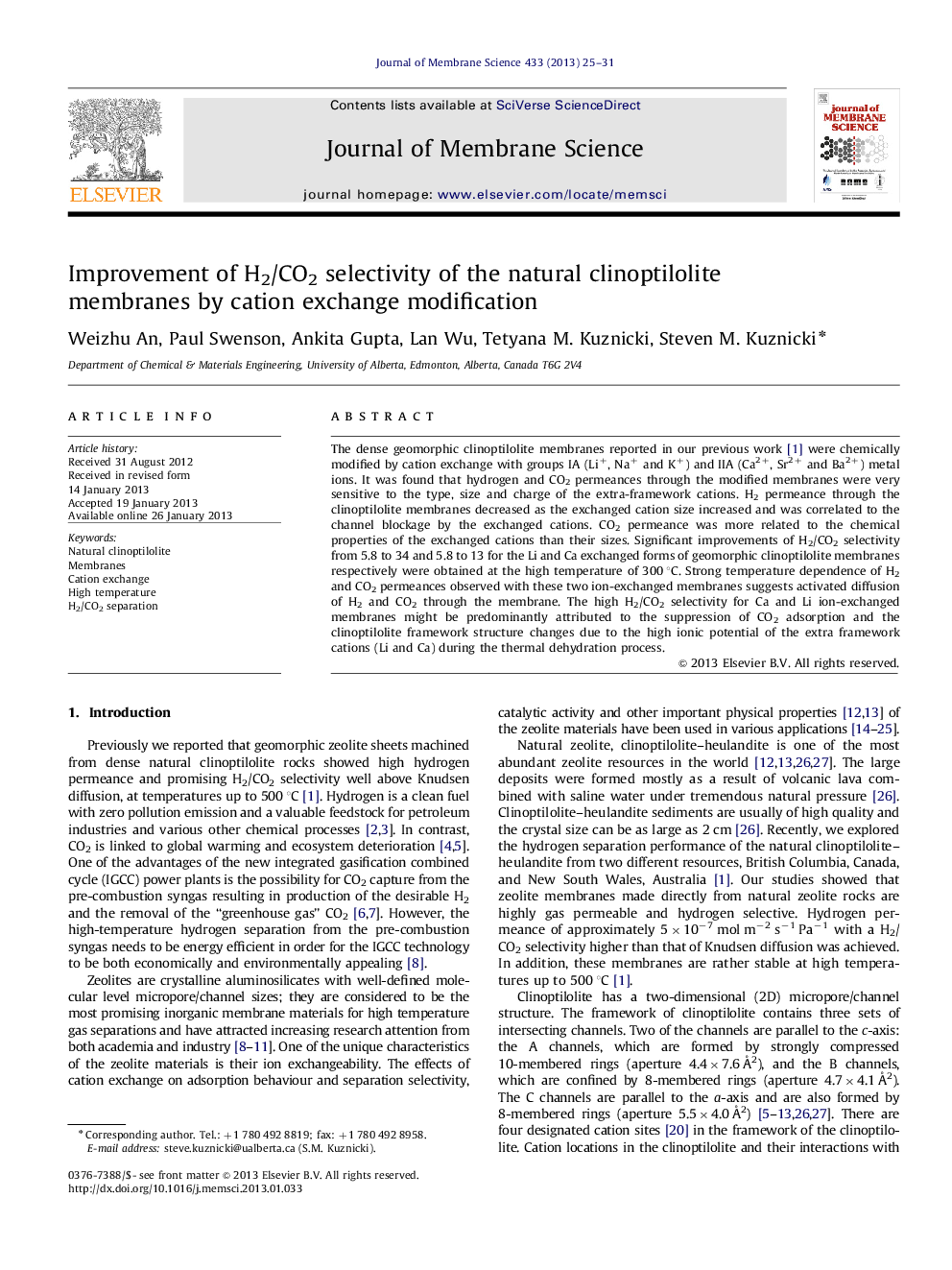| Article ID | Journal | Published Year | Pages | File Type |
|---|---|---|---|---|
| 634472 | Journal of Membrane Science | 2013 | 7 Pages |
The dense geomorphic clinoptilolite membranes reported in our previous work [1] were chemically modified by cation exchange with groups IA (Li+, Na+ and K+) and IIA (Ca2+, Sr2+ and Ba2+) metal ions. It was found that hydrogen and CO2 permeances through the modified membranes were very sensitive to the type, size and charge of the extra-framework cations. H2 permeance through the clinoptilolite membranes decreased as the exchanged cation size increased and was correlated to the channel blockage by the exchanged cations. CO2 permeance was more related to the chemical properties of the exchanged cations than their sizes. Significant improvements of H2/CO2 selectivity from 5.8 to 34 and 5.8 to 13 for the Li and Ca exchanged forms of geomorphic clinoptilolite membranes respectively were obtained at the high temperature of 300 °C. Strong temperature dependence of H2 and CO2 permeances observed with these two ion-exchanged membranes suggests activated diffusion of H2 and CO2 through the membrane. The high H2/CO2 selectivity for Ca and Li ion-exchanged membranes might be predominantly attributed to the suppression of CO2 adsorption and the clinoptilolite framework structure changes due to the high ionic potential of the extra framework cations (Li and Ca) during the thermal dehydration process.
► Geomorphic natural zeolite membranes were chemically modified by cation exchange. ► H2/CO2 separation using modified membranes was examined at temperatures up to 500 °C. ► H2/CO2 selectivity was significantly improved by Li and Ca exchange. ► Potential of using cation exchange to tune membrane performance was demonstrated.
